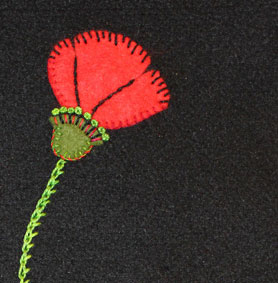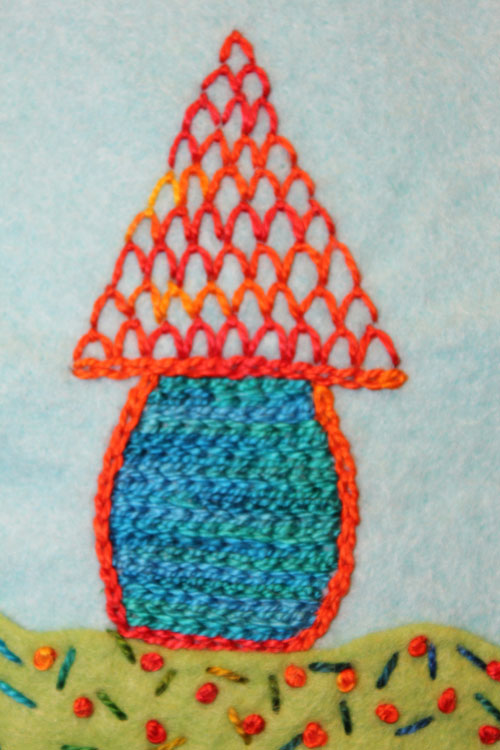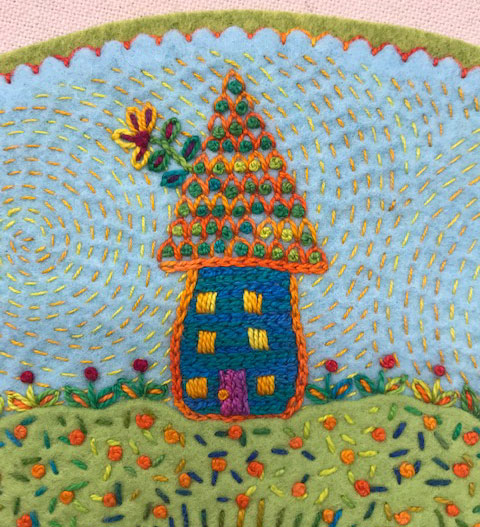
One challenge when making textile designs is how to finish the edges. Quiltmakers use different binding methods to add that final touch to a piece of artwork. But how do you finish the border on a free-form embroidery piece?
Today’s Stitch Tip: Try a Simple Border Finish

This project, Natural Gardening, from Playful Free-Form Embroidery is made on 1 piece of black wool. The wool is firm enough to hold a flat shape but is easily embroidered. When it came time to finish the edge of the design I weighed my options. Should I put another piece of fabric behind it and stitch the edges of the black wool to the backing fabric? Should I place strips of fabric on top of the black wool to add a frame?
Here’s what I came up with- a simple line of chain stitches around the edge of the black fabric. The red thread repeats the color of the poppy flowers and adds a formal finish to the design. I like this border on a free-form embroidery and will use it again. Sometimes simple is best.




